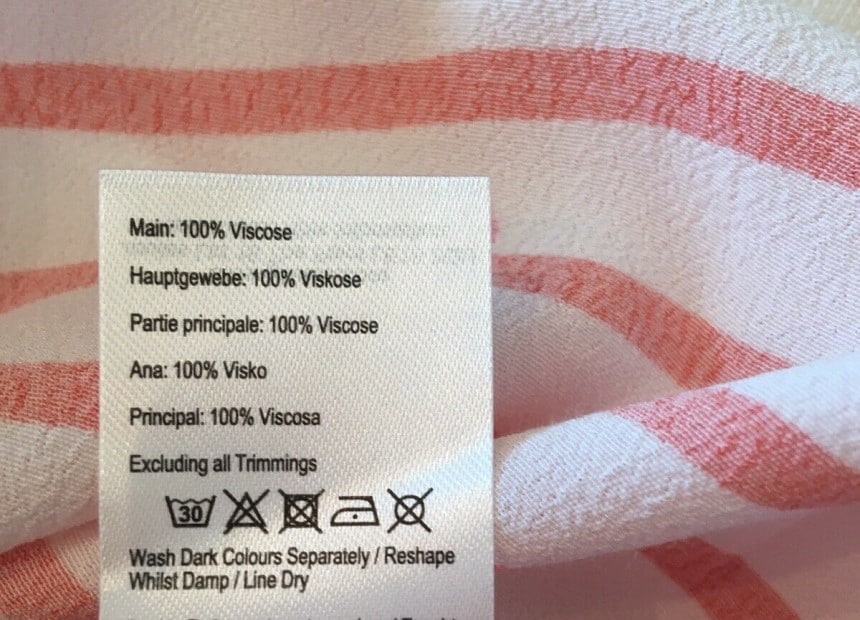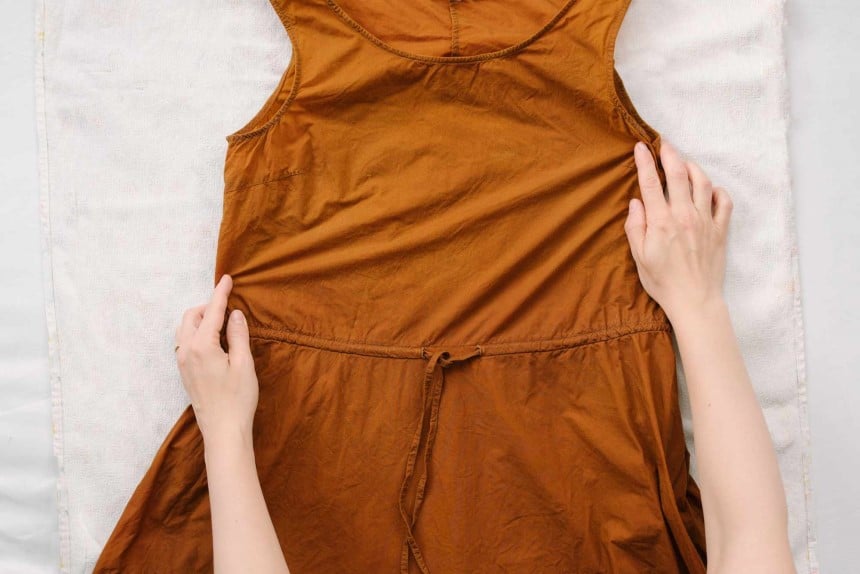The most crucial thing you need to know before you start ironing any garment or linen is knowing what type of fabric it is. Garments and linen have to have different temperatures depending on the fabric. To avoid disaster when ironing, make sure you choose the correct setting on your iron. If you end up choosing the wrong setting or temperature, you can destroy your garments. Some fabrics, like viscose, require special care. In this article, we will cover how to iron viscose safely.
Do you need to iron a viscose garment?
While ironing a viscose garment can be quite tricky because the fabric does not typically react well to direct heat, like heat coming from an iron. If you want to iron viscose garments, you will need to place some type of cloth between the shirt and move the iron up and down quickly. An ironing cloth will work well for this. Viscose garments are ones that tend to wrinkle very easily, and sometimes you have to work a bit harder to get those wrinkles out. This makes it difficult to iron the viscose garment because high temperatures on the fabric can leave iron marks if you move too slowly.
What temperature to iron with?
While there is not a set temperature that is universal for viscose garments, the consensus is clear one thing: low heat. While high heat will leave marks on the garment that are hard to get out, low heat may not work well enough to get the job done.
What setting to use when ironing viscose?
If you do not want to use the cool iron setting, you can check out two more options. You can see if you have a rayon setting on your iron. This is the best option that you can use on Viscose garments. On the iron, there should be a silk setting, and it is best to use it if you do not have a rayon setting. Viscose garments can be compared to silk and
lyocell garments
Trusted Source
Pulp fabric: everything you need to know about lyocell | Fashion | The Guardian
It’s got a scientific name and a heavenly silkiness – but is the material that is showing up everywhere, from catwalks to your wardrobe, really as sustainable as we are led to believe?
www.theguardian.com
as they can be damaged just as easily.
How to iron different viscose clothes?
You may have different types of viscose garments in your wardrobe. Keep in mind that you should not attempt to iron the viscose garments wet. It is also best to turn the garments inside out so you can minimize the risk of burn marks.
The proper steps to take would be:
- Check the cleaning label on the garment. This will give you a clear indication of what temperature it can be ironed if it can be ironed at all. The cleaning label on the garment can be found on the inside attached to a seam.

- Grab your iron, the ironing board, or mat, adjust the settings on the iron to silk, synthetics, or rayon setting. Make sure to check that the steam setting is not on, as this will leave watermarks on the garment.
- While the iron is heating up, you can go ahead and turn the garment inside out. Lay it out flat and smooth out any wrinkles that you can see with your hands.
- When you are ready to start, you will press the iron directly to the garment if it is inside out. If you did not turn the garment inside out, you would need to lay a cloth for dry pressing on the garment and then proceed to iron.
- In smooth and even motions, move the iron up and down pretty quickly on the garment. Make sure to not press too hard on the garment or twist the iron. If you do this, it can stretch and damage the garment.
- After you have finished ironing the garment, make sure to hang it up in a dry and cool place.
Do not apply high heat to any part of the garment because it may scorch or melt it. If you have the time and resources, it would be best to air dry the viscose garment. Place it on a hanger and let it be flat. Viscose garments are more rigid when they are wet but quickly recover their shape once they are dry. Make sure to not put your viscose garment in the dryer.
How to iron a viscose shirt or blouse?
When you are starting to iron a viscose shirt or blouse, pay special attention to how long you have the iron on the garment. The best way to ensure that you do not leave any heat marks on the garment is to have it turned on low heat and move quickly up and down the garment.
How to iron a viscose dress?
One major key to ironing a viscose garment, and especially a dress, is to turn the garment inside out. Of course, you need to check the label on the dress and make sure that the garment can be ironed. If it says not to iron and you iron it anyways, you are risking burn marks on the garment. Even though the dress is turned inside out, you can still damage the garment, and it can show through. Start by turning the dress inside out and then lay it flat. Before you begin to iron, try to smooth out any wrinkles with your hands that you might see.
 How to iron viscose pants?
How to iron viscose pants?
If you find yourself needing to iron some viscose pants, you should first check the cleaning label that came with them from the manufacturer. If the label states that you should not use iron, head to the dry cleaners with them. Like a viscose dress, you should try to turn them inside out and then lay them out flat, smoothing any wrinkles you can see. Turning them inside out is the best way to preserve them, but if you can’t, then make sure to iron them quickly, lay a cotton cloth over the pants, and avoid using any type of steamer.
Final thoughts
Viscose is no doubt a very tricky and delicate garment type to work. Viscose can be compared to silk and should receive delicate care when washing and drying to avoid shrinking or damage. It can seem impossible to iron, but it is doable if you pay attention to what you are doing and take the necessary precautions. Once you learn how to iron viscose garments, you can start skipping the dry cleaners. If you are looking for a steamer that will work on certain fabrics, you can check out the highly recommended Rowenta steamer. Another reliable steamer that comes with high ratings is a professional clothing iron.
References
The post How to Iron Viscose: Here’s the Answer! appeared first on HouseAndBeyond.org.